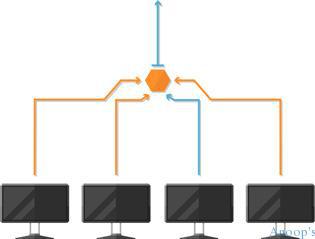How do you control SCCM client data upload MP Policy Bandwidth Configuration Manager | ConfigMgr? I’m back with common issues faced by SCCM / ConfigMgr admins. In the previous post, “How to Overcome Daily Worries of an SCCM ConfigMgr Admin,” we’ve seen many daily issues faced by CM admins.
Today, I will cover SCCM Client Data Upload and SCCM MP policy request bandwidth. I’ve seen several issues because of the data traffic initiated by Client Data Upload and Policy Request data.
Control SCCM Client Data Upload—This can happen in most enterprises when your WAN connectivity to remote offices is slow. One other resource talks about the actual size of SCCM client data transferred between SCCM/ConfigMgr servers and the client. More details are here.
This post will give you all the details on controlling SCCM client data upload MP Policy Bandwidth Configuration Manager.
- SCCM 2405 New Features
- SCCM 2403 New Key Features and Improvements
- 2404 Microsoft Intune New Features April Update
- Microsoft Intune Extends Support To Android 10 And Later From October 2024
- Use Power Automate To Import Autopilot Devices Hash Via Email For Intune Engineers
- New Key Features of SCCM 2309 | Top Improvements
- Download SCCM 2309 Early Ring Version using PowerShell Script
- SCCM 2307 Technical Preview New Features
What is SCCM Client Upload Data?
Client upload is a scheduled operation for each client. The size of the upload depends upon inventory. The process executes a scan of installed software or files and uploads the results to the client’s MP.
But when you have a remote office with many clients, and they are sending inventory to a remote MP on a slow WAN, you can be pulled into priority 1 issues and conference calls and then RCA documentation.
Hopefully, you don’t want to write those SCCM traffic-related Root Cause Analysis documents in the future. We can’t control or throttle “this” data via SCCM.

What is the Solution to Control SCCM Client Upload Data?
Adaptiva OneSite can help SCCM admins overcome this bandwidth issue. With Adaptiva OneSite, SCCM admins can enable Client Data Upload Bandwidth Management for each major inventory action, including file collection.
This feature allows SCCM admins to define how many clients can concurrently upload inventory data to the MP at a given time and is configurable per inventory action.

What is SCCM Client Policy Request Bandwidth?
SCCM admins decided to put all the MPs in a central location, as 1 MP can handle up to 25000 clients in a scenario. So, the clients are in multiple remote offices, with thousands of clients checking for client policy with the MP, which is connected via slow WAN.
That means each client will initiate an HTTP connection to its MP, and the MP will query the SCCM database to see any new policies for the client and then return the results. These connections via slow WAN could always cause network bandwidth issues.

What is the Solution to Control SCCM Client Policy Request Bandwidth?
Again, Adaptiva OneSite can help to resolve this issue as well. The Policy Bandwidth Management feature of OneSite (Policy Push) can help control policy bandwidth management. OneSite is deeply integrated with SCCM, and it can immediately detect client policy changes when they are made.
Once the SCCM policy change is detected, it only instructs your targeted clients to check for policy in real time. This feature allows SCCM admins to increase their policy polling interval to the maximum value of 24 hours; if there are no applicable policy changes for a given SCCM client within the 24-hour interval, then the client won’t check.
More Information about these features of Adaptiva OneSite is here.
Resources
Windows 10 Latest Version Of Client Operating System From Microsoft
We are on WhatsApp now. To get the latest step-by-step guides, news, and updates, Join our Channel. Click here. HTMD WhatsApp.
Author
Anoop C Nair is Microsoft MVP! He is a Device Management Admin with more than 20 years of experience (calculation done in 2021) in IT. He is a Blogger, Speaker, and Local User Group HTMD Community leader. His main focus is on Device Management technologies like SCCM 2012, Current Branch, and Intune. He writes about ConfigMgr, Windows 11, Windows 10, Azure AD, Microsoft Intune, Windows 365, AVD, etc.